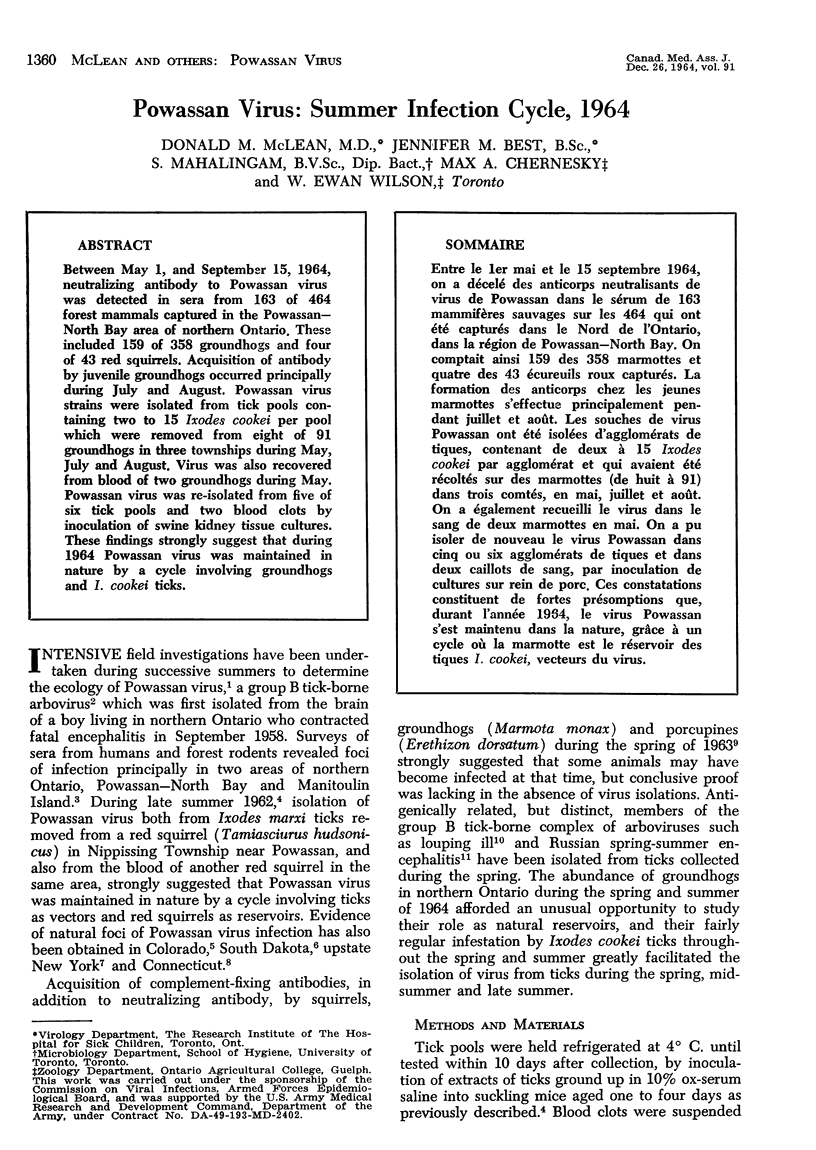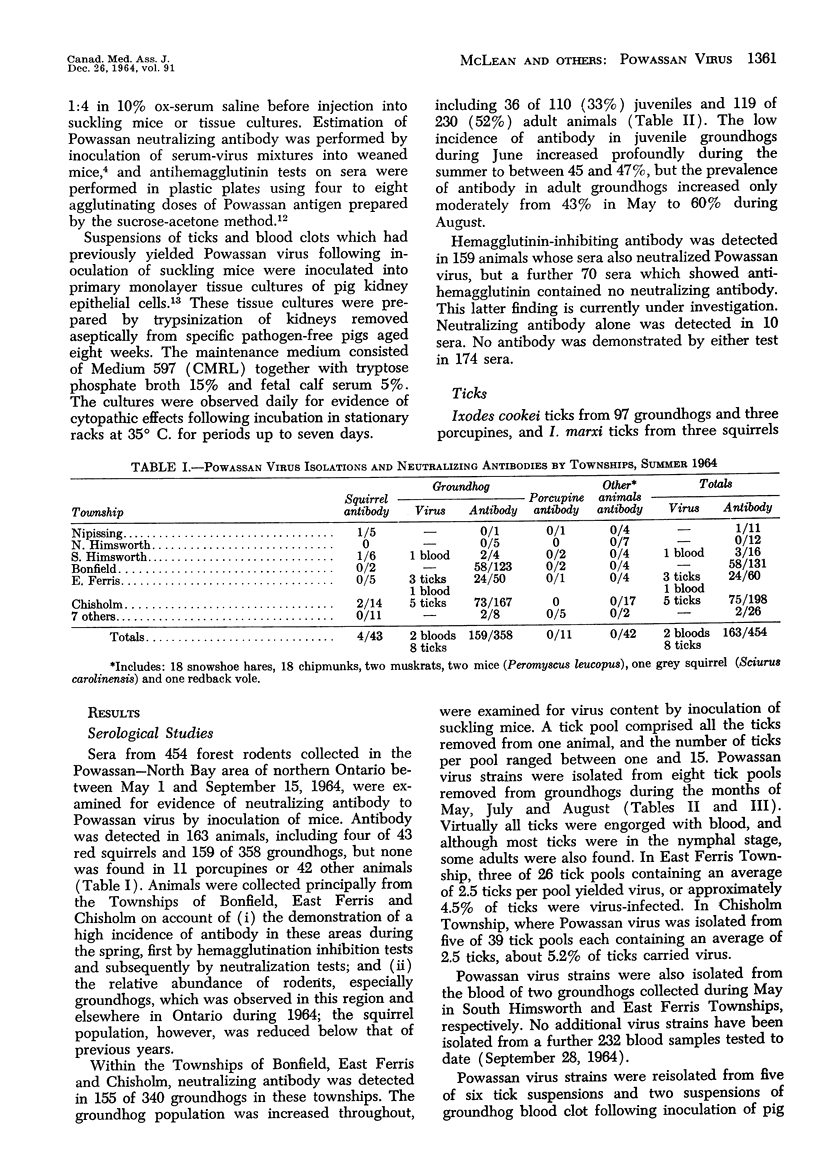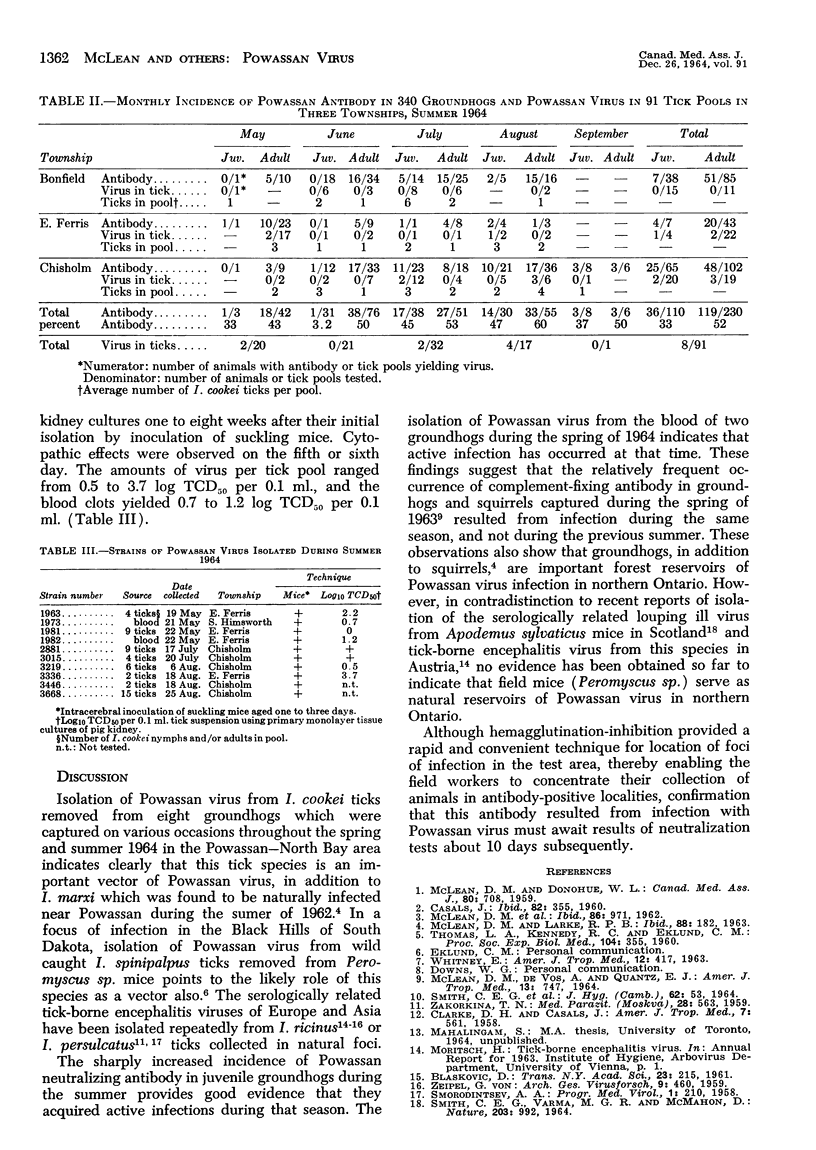Abstract
Between May 1, and September 15, 1964, neutralizing antibody to Powassan virus was detected in sera from 163 of 464 forest mammals captured in the Powassan—North Bay area of northern Ontario. These included 159 of 358 groundhogs and four of 43 red squirrels. Acquisition of antibody by juvenile groundhogs occurred principally during July and August. Powassan virus strains were isolated from tick pools containing two to 15 Ixodes cookei per pool which were removed from eight of 91 groundhogs in three townships during May, July and August. Virus was also recovered from blood of two groundhogs during May. Powassan virus was re-isolated from five of six tick pools and two blood clots by inoculation of swine kidney tissue cultures. These findings strongly suggest that during 1964 Powassan virus was maintained in nature by a cycle involving groundhogs and I. cookei ticks.
Full text
PDF


Selected References
These references are in PubMed. This may not be the complete list of references from this article.
- CASALS J. Antigenic relationship between Powassan and Russian spring-summer encephalitis viruses. Can Med Assoc J. 1960 Feb 13;82:355–358. [PMC free article] [PubMed] [Google Scholar]
- CLARKE D. H., CASALS J. Techniques for hemagglutination and hemagglutination-inhibition with arthropod-borne viruses. Am J Trop Med Hyg. 1958 Sep;7(5):561–573. doi: 10.4269/ajtmh.1958.7.561. [DOI] [PubMed] [Google Scholar]
- MCLEAN D. M., LARKE R. P. Powassan and Silverwater viruses: ecology of two Ontario arboviruses. Can Med Assoc J. 1963 Jan 26;88:182–185. [PMC free article] [PubMed] [Google Scholar]
- McLEAN D. M., DONOHUE W. L. Powassan virus: isolation of virus from a fatal case of encephalitis. Can Med Assoc J. 1959 May 1;80(9):708–711. [PMC free article] [PubMed] [Google Scholar]
- SMITH C. E., MCMAHON D. A., O'REILLY K. J., WILSON A. L., ROBERTSON J. M. THE EPIDEMIOLOGY OF LOUPING ILL IN AYRSHIRE: THE FIRST YEAR OF STUDIES IN SHEEP. J Hyg (Lond) 1964 Mar;62:53–68. doi: 10.1017/s0022172400039772. [DOI] [PMC free article] [PubMed] [Google Scholar]
- SMITH C. E., VARMA M. G., MCMAHON D. ISOLATION OF LOUPING ILL VIRUS FROM SMALL MAMMALS IN AYRSHIRE, SCOTLAND. Nature. 1964 Aug 29;203:992–993. doi: 10.1038/203992a0. [DOI] [PubMed] [Google Scholar]
- THOMAS L. A., KENNEDY R. C., EKLUND C. M. Isolation of a virus closely related to Powassan virus from Dermacentor andersoni collected along North Cache la Poudre River, Colo. Proc Soc Exp Biol Med. 1960 Jun;104:355–359. doi: 10.3181/00379727-104-25836. [DOI] [PubMed] [Google Scholar]
- WHITNEY E. SEROLOGIC EVIDENCE OF GROUP A AND B ARTHROPOD-BORNE VIRUS ACTIVITY IN NEW YORK STATE. Am J Trop Med Hyg. 1963 May;12:417–424. doi: 10.4269/ajtmh.1963.12.417. [DOI] [PubMed] [Google Scholar]
- ZAKORKINA T. N. [On virological characteristics of a focus of tick-encephalitis in the construction area of the Krasnoiarsk hydroelectric station]. Med Parazitol (Mosk) 1959 Sep-Oct;28:563–568. [PubMed] [Google Scholar]
- von ZEIPEL Isolation of viruses of the Russian spring summer encephalitis-louping ill group from Swedish ticks and from a human case of meningoencephalitis. Arch Gesamte Virusforsch. 1959;9:460–469. doi: 10.1007/BF01242853. [DOI] [PubMed] [Google Scholar]


